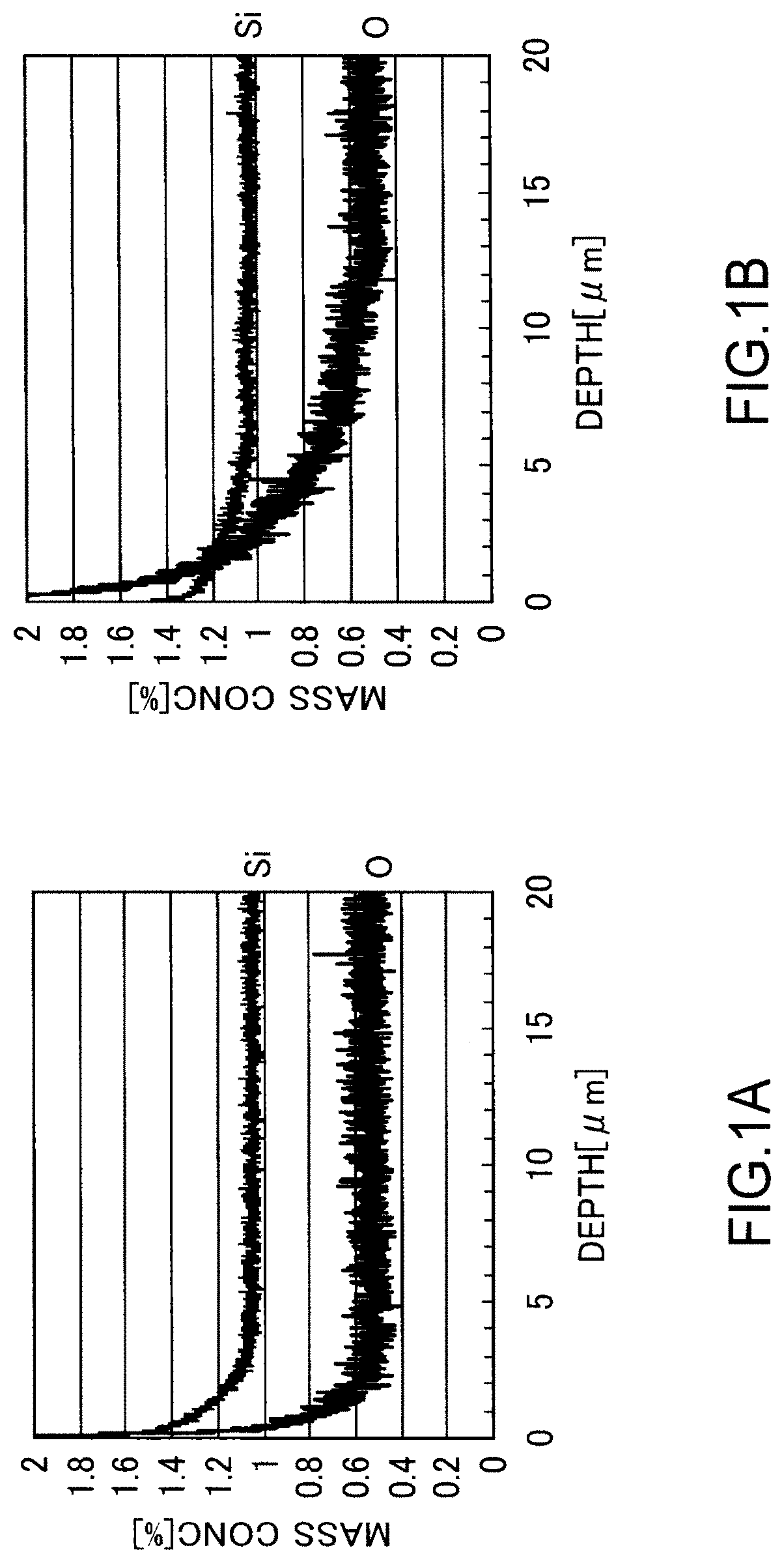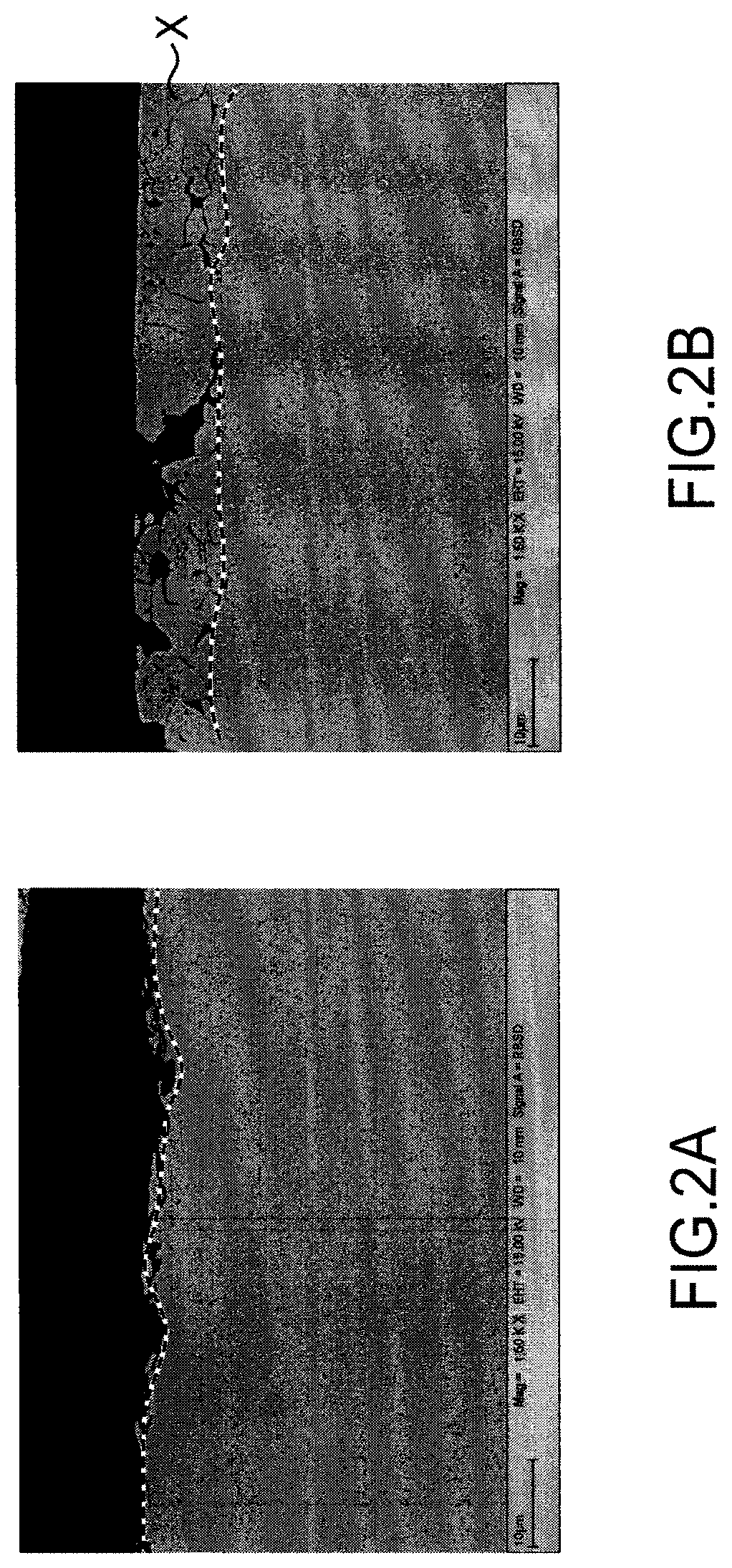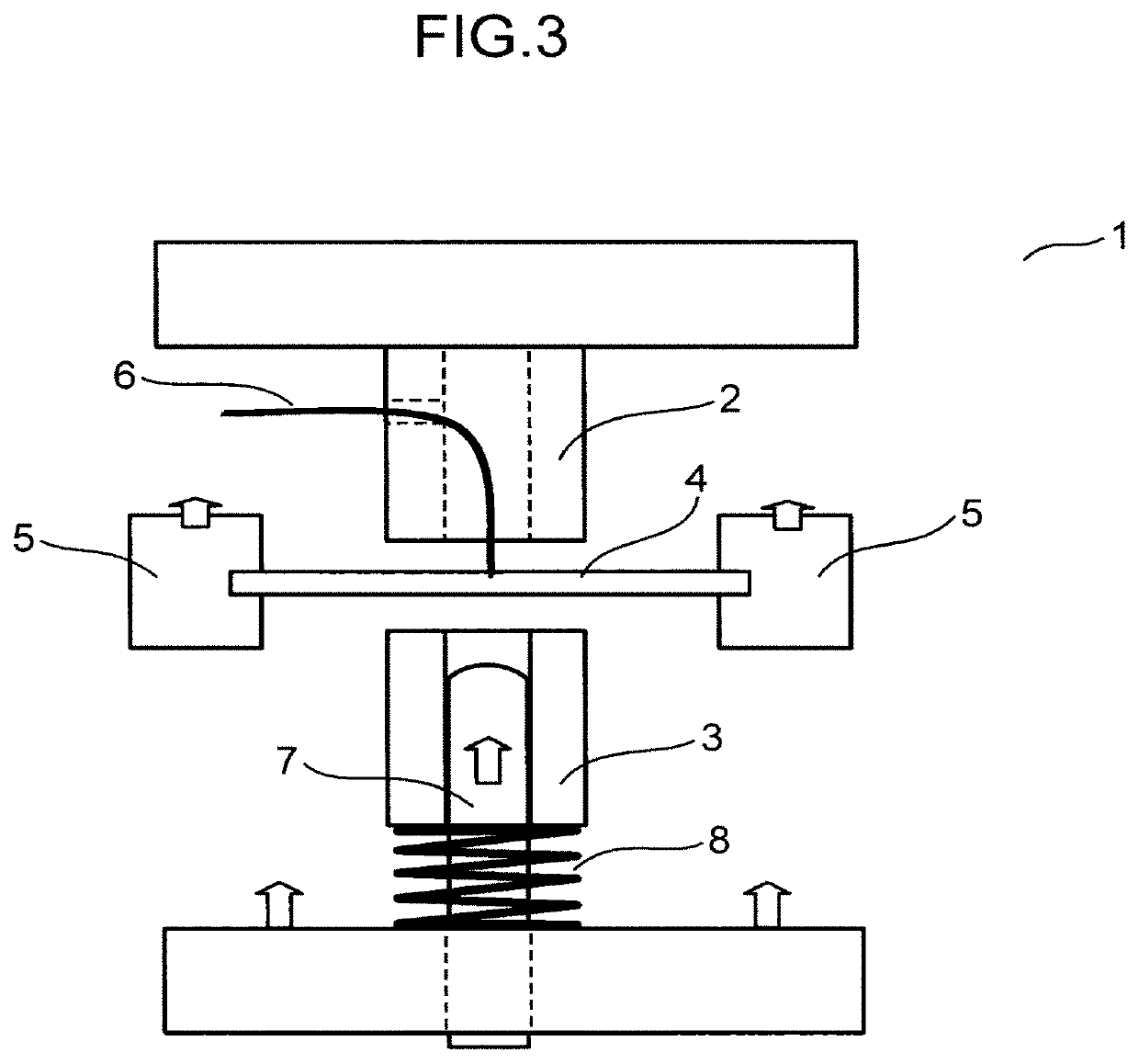Steel plate for hot forming and manufacturing method of hot press formed steel member
a technology steel plate, which is applied in the field of steel plate for hot forming and manufacturing method of hot press forming steel member, can solve the problems of significant dimensional accuracy degradation, increased press forming force, scratches on the surface of steel member, etc., and achieve good hot press forming, high si content, and suppressing scale loss
- Summary
- Abstract
- Description
- Claims
- Application Information
AI Technical Summary
Benefits of technology
Problems solved by technology
Method used
Image
Examples
example 1
[0086]In Example 1 steel sheets were evaluated as follows. A steel material having the chemical composition given in Table 1 was melted in a converter, and a slab 230 mm thick was produced through continuous casting. The slab was then hot-rolled. Hot rolling involved heating of the slab up to 1250° C. in a heating furnace followed by rough rolling and finish rolling, to bring the thickness of the slab to 2.3 mm. Thereafter, the slab was cooled down to the coiling temperature illustrated in Table 2, and was coiled in the form of a coil. The coil was subjected thereafter to pickling. In all instances the pickling solution that was used was hydrochloric acid at a concentration of 10 mass % and solution temperature of 83° C., as illustrated in Table 2.
[0087]As a preliminary experiment in the pickling process, firstly 50 mm2 test pieces were cut out from the steel sheet after hot rolling. In the laboratory, the test pieces were treated with a pickling solution in the form of hydrochloric...
example 2
[0096]In Example 2 there was evaluated a method for manufacturing a steel member. In more detailed terms, a hot forming test was carried out as described below to evaluate hot oxide scale adhesion.
[0097]Hot Forming Test
[0098]The above cold-rolled steel sheets were cut to a size 1.4 mm (t)×150 mm (w)×50 mm (L), and were degreased, to yield respective test pieces. A hot forming test was performed using the test pieces. The test device used in the test was a hot-working reproduction test device “Thermomaster Z” with electric heater, by Fuji Electronic Industrial Co., Ltd. As illustrated in FIG. 3, tools for stretch-expand forming which consist of a fixed upper die 2 and a lower die 3 having a presser spring 8 and a test piece 4 were installed inside the test device 1, and electrical conducting heating was performed using electrodes 5. Thereafter, the lower die 3 was firstly raised, to sandwich the test piece 4 between the lower die 3 and the fixed upper die 2, and hot forming was subse...
PUM
| Property | Measurement | Unit |
|---|---|---|
| temperature | aaaaa | aaaaa |
| temperature | aaaaa | aaaaa |
| thickness | aaaaa | aaaaa |
Abstract
Description
Claims
Application Information
 Login to View More
Login to View More - R&D
- Intellectual Property
- Life Sciences
- Materials
- Tech Scout
- Unparalleled Data Quality
- Higher Quality Content
- 60% Fewer Hallucinations
Browse by: Latest US Patents, China's latest patents, Technical Efficacy Thesaurus, Application Domain, Technology Topic, Popular Technical Reports.
© 2025 PatSnap. All rights reserved.Legal|Privacy policy|Modern Slavery Act Transparency Statement|Sitemap|About US| Contact US: help@patsnap.com



